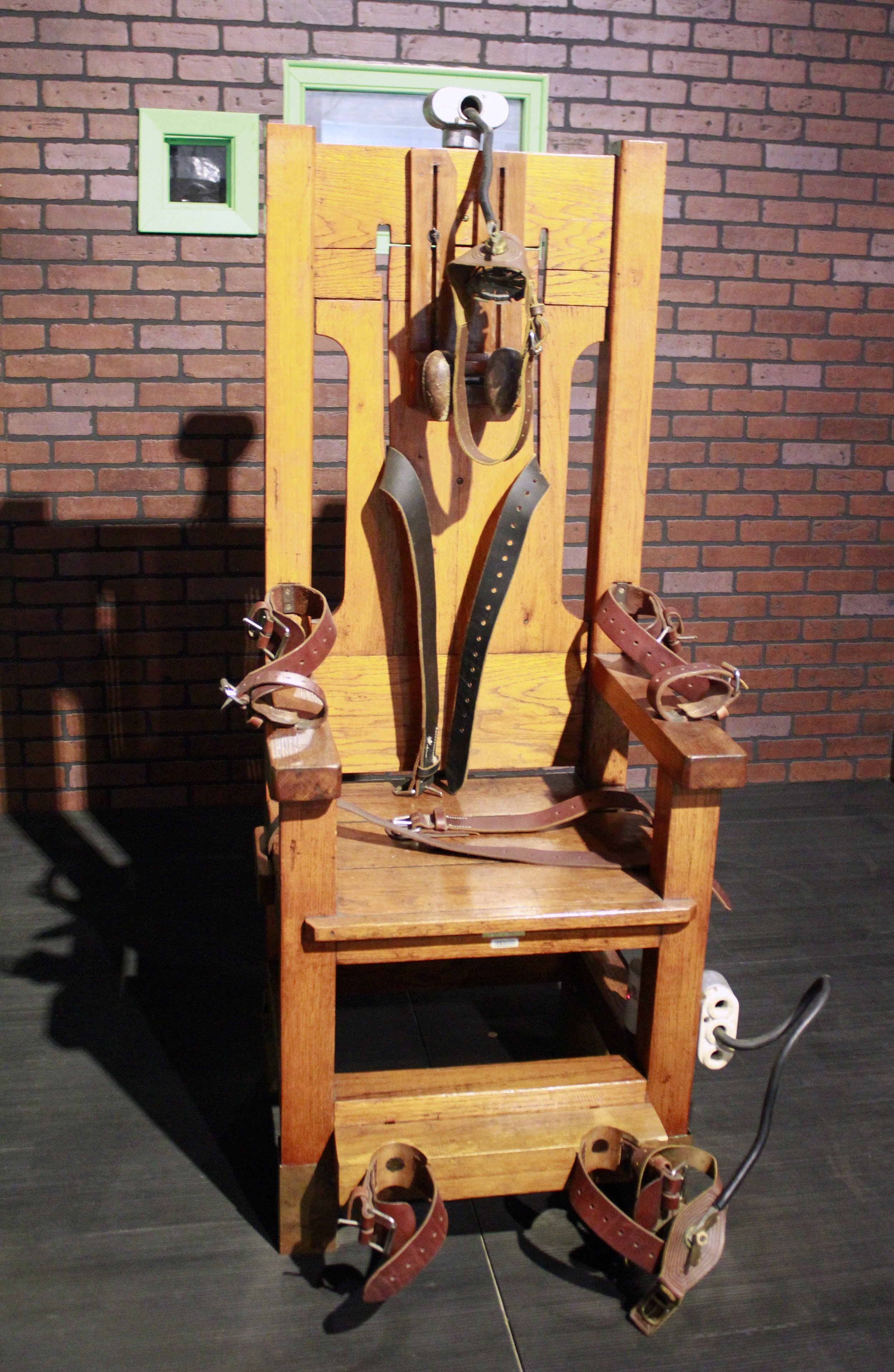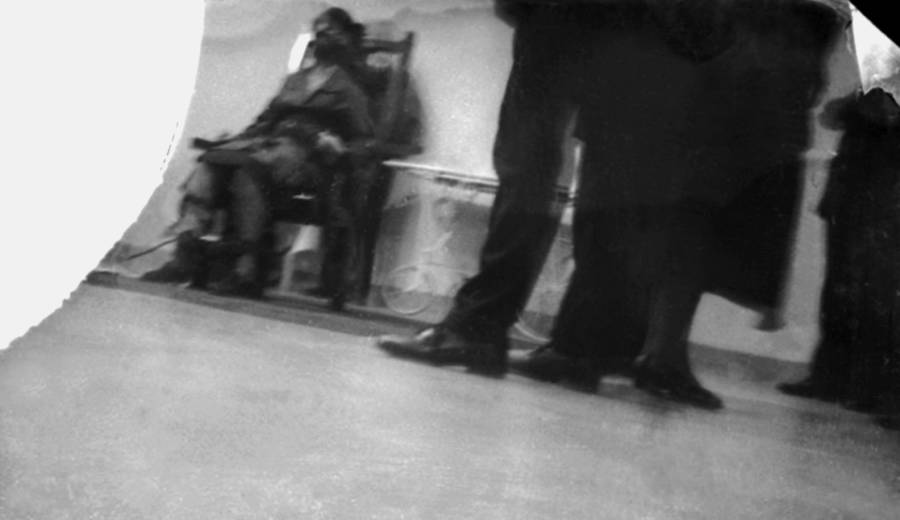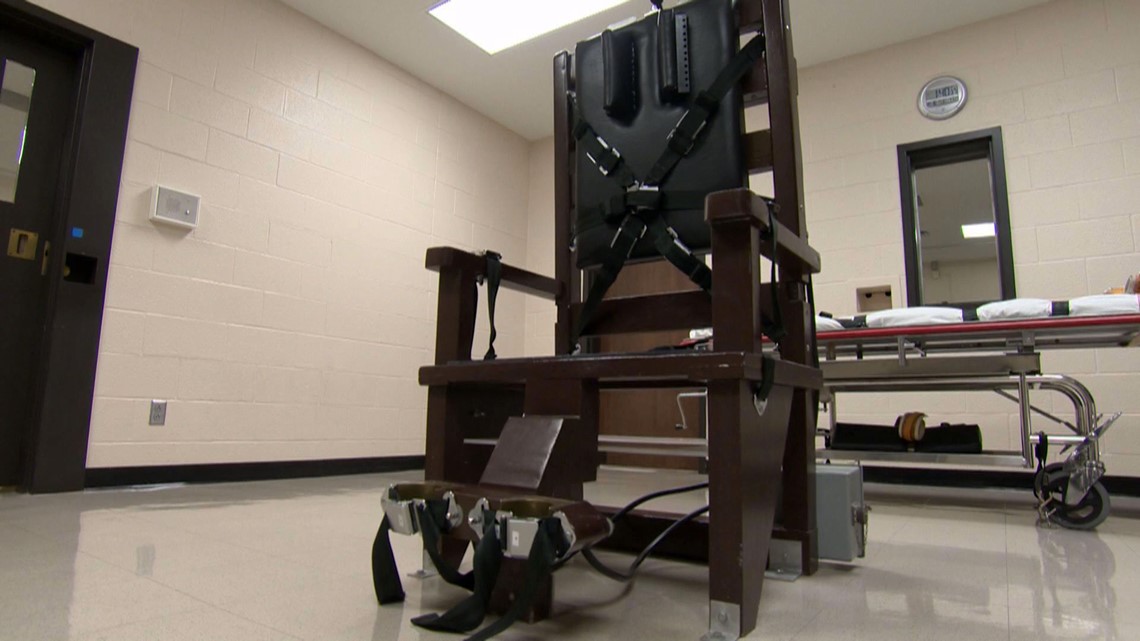Are we desensitized to the point of finding humor in the macabre? The unsettling juxtaposition of innocence and brutality, epitomized by searches for "one girl one electric chair," reveals a disturbing fascination lurking beneath the surface of the internet. This seemingly innocuous search term unlocks a Pandora's Box of ethical questions, artistic explorations gone awry, and the chilling reality of capital punishment.
The phrase itself, "one girl one electric chair," is jarring. It throws together two concepts youth, represented by "girl," and a symbol of ultimate punishment, the "electric chair" that are inherently discordant. This collision of innocence and state-sanctioned death is precisely what fuels the controversy and the morbid curiosity surrounding the term. It's a phrase that can be interpreted in vastly different ways, from abstract artistic expression to a disturbing fetishization of violence. This ambiguity is what makes it so unsettling, forcing us to confront uncomfortable truths about our own capacity for fascination with the dark side of humanity.
| Category | Information |
|---|---|
| Subject Matter | Exploration of the controversial search term "one girl one electric chair" |
| Ethical Implications | Raises questions about desensitization, morbid curiosity, and the representation of violence, especially involving youth. |
| Artistic Interpretation | Examines how the phrase could be interpreted as artistic expression and the potential for misinterpretation. |
| Capital Punishment Context | Connects the search term to the broader debate on the death penalty and its ethical considerations. |
| Online Trends | Discusses the virality of related content and its impact on public perception. |
| Legal Aspects | Highlights the legal and ethical boundaries of creating and sharing content of this nature. |
| Reference Link | Death Penalty Information Center |
The internet's vastness allows for the free flow of information, but it also presents challenges in regulating content and ensuring ethical considerations are met. A search for "one girl one electric chair" yields a variety of results, ranging from stock videos and forum discussions to disturbing memes and even alleged artistic expressions. The algorithm often struggles to differentiate between legitimate artistic exploration and content that promotes violence or exploitation. This ambiguity leaves users vulnerable to encountering harmful and offensive material, while also raising complex questions about censorship and freedom of expression. The question becomes: where do we draw the line between artistic license and the perpetuation of harmful imagery?
- Ron Popeils Legacy Love Laughter Infomercial Fame Revealed
- Rodolfo Salas The Untold Truth About The Fake Profile Star
The availability of stock videos depicting "one girl one electric chair" is a particularly unsettling aspect of this phenomenon. The idea that such imagery is readily available for commercial or creative use speaks to a level of desensitization within the stock video industry. While some might argue that these videos could be used for educational or awareness campaigns related to the death penalty, the potential for misuse and exploitation is undeniable. The ease with which these videos can be downloaded and incorporated into various projects raises concerns about the normalization of violence and the objectification of individuals in vulnerable situations.
Adding to the complexity is the presence of humorous content, such as short videos and memes, that utilize the "one girl one electric chair" concept. The attempt to inject humor into such a dark and sensitive topic is deeply problematic. It trivializes the suffering associated with capital punishment and normalizes violence against women. These humorous takes often rely on shock value and edgy humor, failing to engage in any meaningful commentary or critique. Instead, they contribute to a culture of desensitization, where violence and death are reduced to mere punchlines.
The exploration of the search term also uncovers the ethical minefield of creating and consuming content related to the death penalty. The execution of individuals, regardless of their crimes, is a deeply contentious issue. To depict this process, especially with the added element of a young girl, raises serious ethical concerns. It risks glorifying violence, dehumanizing the condemned, and perpetuating harmful stereotypes. Furthermore, it can inflict emotional distress on viewers, particularly those who have personal experiences with violence or loss.
- Ringos Granddaughter The Talented Tatia Jayne Starkey Bio
- Mark Killeen Wife Age Movies More The Untold Story
The emergence of bizarre attractions, like the $1 machine in Old Town Kissimmee featuring a mannequin in an electric chair, further highlights the disturbing trend of trivializing the death penalty. These attractions often cater to tourists seeking cheap thrills and sensational experiences. However, they fail to engage with the complex ethical and moral questions surrounding capital punishment. Instead, they exploit the morbid curiosity of visitors, perpetuating a culture of desensitization and disrespect for human life.
Online platforms like Etsy also play a role in this phenomenon. While the platform may prohibit content that directly promotes violence or hate speech, the availability of items related to "one girl one electric chair," such as dollhouse miniatures, raises questions about the boundaries of acceptable content. These items, while seemingly innocuous, can contribute to the normalization of violence and the objectification of individuals. The platform has a responsibility to carefully consider the potential impact of such items and to ensure that they do not violate its ethical guidelines.
The search term "one girl one electric chair" also intersects with the broader issue of online radicalization. Individuals who are drawn to violent or extremist ideologies may use this type of content to reinforce their beliefs and to dehumanize their targets. The availability of this content online can create echo chambers where hateful views are amplified and normalized. It is crucial for online platforms to actively combat the spread of radical content and to provide resources for individuals who are at risk of being radicalized.
The incident involving minor girl Heera Bai, who died due to electric burns, serves as a stark reminder of the real-world consequences of electrical hazards and the importance of safety precautions. While not directly related to the "one girl one electric chair" search term, this tragedy underscores the need for responsible content creation and the avoidance of imagery that could be interpreted as condoning or glorifying violence. The death of Heera Bai highlights the devastating impact that negligence and lack of awareness can have on vulnerable individuals.
The Daily Dot's report on the rising popularity of the "electric chair" response highlights the potential for online trends to be co-opted for harmful purposes. What may start as a humorous meme or reaction can quickly become a symbol of hate or violence. It is important for online users to be aware of the potential impact of their words and actions and to avoid participating in trends that could be used to spread harmful ideologies.
The execution of Davis in the electric chair in 1999, which became controversial due to its reportedly gruesome nature, serves as a reminder of the inherent brutality of capital punishment. The fact that Davis began bleeding heavily from the nose during the process sparked debates about the humanity of the electric chair as a method of execution. This incident highlights the ethical and moral questions surrounding the death penalty and the need for alternative forms of punishment that respect human dignity.
The opposition to the death penalty by leftists for decades underscores the progressive thought that values human rights and opposes state-sanctioned violence. This opposition is based on the belief that every individual has the right to life and that the state should not have the power to take that right away. The death penalty is seen as a cruel and unusual punishment that disproportionately affects marginalized communities and is prone to errors and biases.
The availability of "one girl one electric chair" related content raises complex legal questions about freedom of speech and the limits of expression. While artistic expression is generally protected under the First Amendment, there are exceptions for content that incites violence, promotes hate speech, or exploits children. The legal boundaries of creating and sharing content of this nature are often unclear and depend on the specific context and content of the material.
The lack of clear search results for "1 girl 1 electric chair video" may indicate efforts by search engines to suppress or remove content that is deemed harmful or offensive. However, the fact that the search term continues to be used and discussed online suggests that these efforts are not entirely effective. A more comprehensive approach is needed, involving collaboration between online platforms, law enforcement, and civil society organizations, to address the underlying issues of online radicalization and the spread of harmful content.
The existence of videos titled "The 1 girl 1 cigarette video," published a year ago and viewed by thousands, highlights the broader issue of online content that exploits or endangers children. While the content of these videos may not be directly related to the "one girl one electric chair" search term, they share a common thread of exploiting vulnerable individuals for entertainment or profit. Online platforms have a responsibility to actively identify and remove this type of content and to protect children from harm.
The availability of resources like Storyblocks, which offer royalty-free stock footage clips, can be a valuable tool for content creators. However, it is important to use these resources responsibly and to avoid creating content that could be harmful or offensive. Content creators should carefully consider the ethical implications of their work and ensure that it aligns with their values and principles.
The tweets and online discussions surrounding the "electric chair" reaction highlight the potential for social media to be used for both good and evil. While social media can be a powerful tool for communication and connection, it can also be used to spread hate, misinformation, and violence. It is important for social media users to be critical consumers of information and to avoid sharing content that could be harmful or offensive.
Ultimately, the exploration of the search term "one girl one electric chair" reveals a complex and troubling landscape of online content. It raises difficult questions about ethics, morality, and the responsibility of individuals and institutions to protect vulnerable populations from harm. A comprehensive approach is needed, involving education, awareness, and regulation, to address the underlying issues and to create a safer and more ethical online environment.
The seemingly innocuous act of stacking chairs, as described in the snippets about "good things come for those who stack it," offers a stark contrast to the darker themes explored elsewhere. Yet, even in this seemingly harmless activity, there's a potential for "painful stacking," a reminder that even mundane actions can have unintended consequences. This juxtaposition underscores the need for careful consideration and ethical awareness in all aspects of life, both online and offline.
The availability of free electric chair videos and clips in 4K and HD further complicates the issue. While these resources can be used for legitimate purposes, such as documentaries or educational films, they also have the potential to be misused for entertainment or sensationalism. The responsibility lies with content creators to use these resources ethically and to avoid creating content that could be harmful or offensive.
Finally, the existence of items like the Costzon 2 in 1 kids detachable hanging chair swing tent set serves as a reminder of the importance of protecting children and providing them with safe and nurturing environments. While these items are designed for fun and recreation, it is important to be mindful of the potential for accidents and to ensure that children are supervised at all times.
- Luciane Buchanan The Night Agent Stars Life Secrets
- Stephanie Van Hennick The Untold Story Lionel Stander


